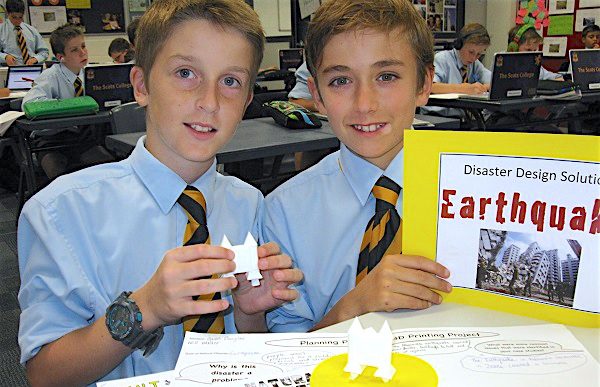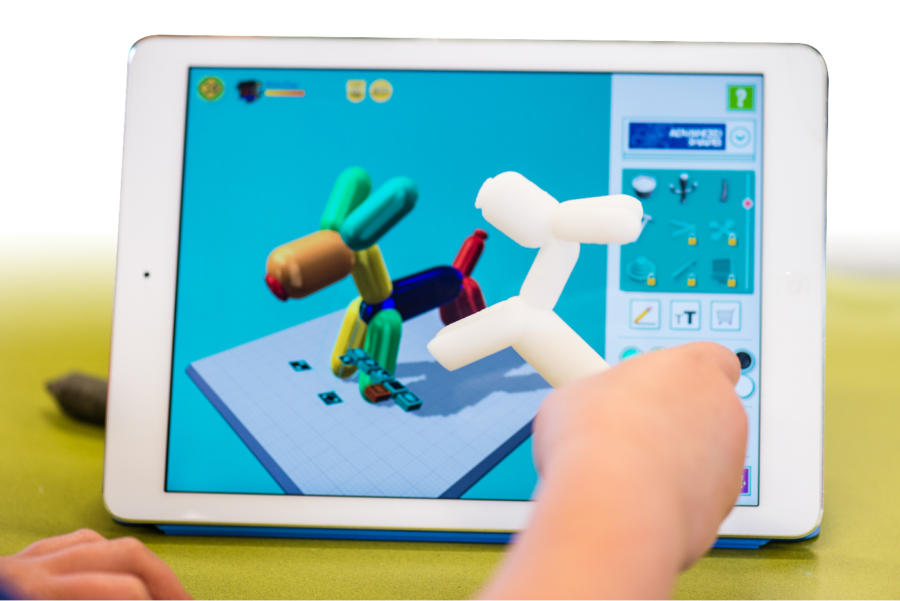“The illiterate of the 21st century will not be those who cannot read and write, but those who cannot learn, unlearn, and relearn,”
Alvin Toffler, author of Future Shock.
At Makers Empire, we recognise the key role that parents, guardians and teachers have in preparing students with the essential skills, mindsets and dispositions that will help them thrive in the future.
85% of jobs that will exist in 2030 haven’t been invented yet. How can we best prepare our students for this unknown future? How can we teach our children to be creators, innovators and problem solvers who can adapt and pivot when necessary to flourish in a rapidly changing world?
Teaching young students Design Thinking helps them develop a growth mindset and important problem solving, analytical and spatial thinking skills. So we equip educators with the tools, knowledge and support they need to embrace creativity and making in education for improved student performance, engagement and learning.
At Makers Empire, we believe every child can make their world better.
Benefits for Students

Benefits for students who engage in Design Thinking include:
- Being able to identify problems and reframe them as actionable opportunities;
- Understanding the value of collaboration and feedback;
- Viewing setbacks and failures as valuable learning moments;
- Appreciating the value of hard work and persistence;
- Developing self-belief as problem solvers;
- Developing empathy;
- Developing a growth mindset;
- Developing stamina and resilience; and
- Developing entrepreneurial and community-minded behaviours.
- A focus that is both future and solutions-oriented.
Examples of Students using Design Thinking
The Makers Empire blog has countless examples of K-8 students using Design Thinking to help themselves and those in their communities. Check out some of these inspiring stories:
- How a 10YO Boy invented a world first device for diabetics using Design Thinking
- How Mundall Primary School students used Design Thinking to generate new town entrance sign ideas
- How 3D printing helped Canadian students create Christmas ornaments and raise funds for a local hospital
- How Snowton Primary School students learning Design Thinking and persistence by creating superhero gadgets
- How Braemar College created a commemorative sculpture with 834 3D printed blocks designed by members of the school community
- How Huntfield Heights students solved pollution issues in their local community with Design Thinking
Watch Videos Showing Design Thinking in action
[huge_it_videogallery id=”21″]What are 21st-century learning skills?
21st Century Learning and Innovation Skills are skills that will be essential for students to possess to thrive in the increasingly complex life and work environments in the 21st century. These include:
- Creativity and Innovation
- Critical Thinking and Problem Solving
- Communication
- Collaboration
With technological advances driving automation and industry-wide disruption in many sectors, it’s the people who can identify and solve new problems in new ways that will be in great demand.
3D design and printing is an ideal way to help young people develop the knowledge, skills, attitudes and behaviours needed to meet the challenges of the twenty-first century.
The Makers Empire Difference for Students
- Students As Creators – Students are positioned as creators, inventors, innovators and problem solvers.
- 21st-Century Ready – Students are equipped with the skills, tools and resources they need to develop as resourceful and optimistic people.
- Resilience – Students learn how to bounce back from setbacks and develop persistence as they work through the design process.
- Collaboration – Through collaboration on their designs, students learn how to give constructive feedback to their peers and to also receive it.
- Citizenship – By teaching them how to identify and solve problems, students can become useful and productive global members of society.
Become a Makers Empire Supporter today
Talk to your school about becoming a Makers Empire subscriber so that your children can start becoming Design Thinkers today. We can help with supporting documents for your school leadership or board. Simply provide us with a few details and we’ll organise the rest.





